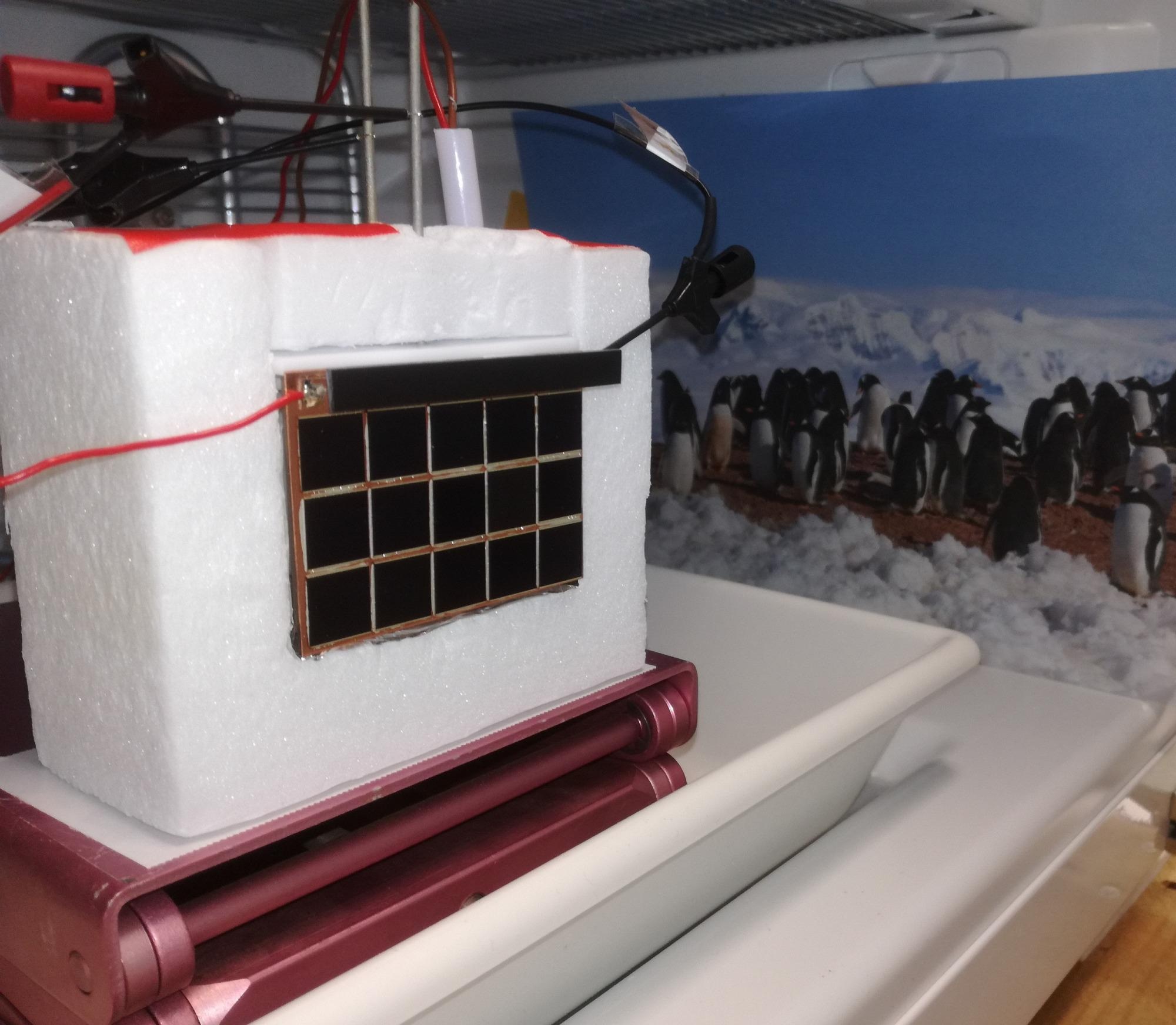A research group from the Helmholtz-Zentrum Berlin has examined how hydrogen can be generated at the South Pole with the help of sunlight, and which approach holds high potential.
 Efficiency increases, when the photovoltaic module is in close contact with the wall of the electrolysis tank. Image Credit: © M. Kölbach/HZB.
Efficiency increases, when the photovoltaic module is in close contact with the wall of the electrolysis tank. Image Credit: © M. Kölbach/HZB.
This study was performed in collaboration with scientists from Ulm University and Heidelberg University.
The analysis concludes that in extremely cold regions, it can be significantly more efficient to fix the PV modules directly to the electrolyzer, that is, thermally coupling them. The reason is the waste heat produced from the PV modules enhances the efficiency of electrolysis in this environment.
The study findings were recently reported in the Energy & Environmental Science journal and hold good for other cold regions on Earth, for example, Canada, Alaska and high mountain regions. In such places, solar hydrogen might help replace fossil fuels like petrol and oil.
When Kira Rehfeld, an environmental physicist, from Heidelberg University paid a visit to Antarctica for her study, she was struck by the presence of intense light there.
Rehfeld noted, “It’s always light in summer. This solar radiation could actually be used to supply the research infrastructure with energy.”
So far, in such remote regions, heaters, engines and generators have mainly been powered with the help of fossil fuels, like petrol or petroleum, delivered by ships which contribute to global warming. Apart from high associated economic charges, pollution caused by even the smallest spills is also considered a great issue, endangering the particularly sensitive ecosystem.
Looking for Eco-Friendly Solutions
Hydrogen could, however, replace fossil fuels and is considered a versatile energy medium that can also be stored extremely well at low temperatures.
Our idea was therefore to use solar modules to produce climate-neutral hydrogen on site during the Antarctic summer by splitting water into hydrogen and oxygen through electrolysis.
Matthias M. May, Postdoc, Institute for Solar Fuels, Helmholtz-Zentrum Berlin
Rehfeld and May sought financial support from the Volkswagen Foundation to examine if hydrogen can be produced with the help of sunlight even at sub-zero temperatures, and which technique would be perfect for this. Low temperatures can help to significantly decrease the efficiency of electrolysis, although cold increases the efficiency of a majority of the solar modules.
The Role of Thermal Coupling
Now, May and his HZB collaborator, Moritz Kölbach, have made an empirical comparison of two different methods: a traditional setup in which the photovoltaic module is physically and thermally isolated from the electrolysis tank, and a fresh, thermally coupled setup in which the photovoltaic module is in close cooperation with the wall of the electrolysis tank, thereby fostering thermal diffusion.
For Antarctic conditions to be simulated, Kölbach collected a freezer, cut a hole in the door, then installed a quartz window, and illuminated the cabinet’s inner portion with the help of simulated sunlight. Then, an electrolysis container was loaded with 30% sulfuric acid (also called battery acid) with a freezing point of around −35 °C that conducts electricity well.
Using Waste Heat to Enhance Electrolysis
Next, experimental cells were set up by Kölbach and a series of measurements were executed. At the time of operation, it became evident that relatively more hydrogen was produced by the cell with the thermally coupled PV modules, as the illuminated PV modules pass their waste heat directly to the electrolyzer.
“We were even able to increase the efficiency by adding additional thermal insulation to the electrolyzer. As a result, the electrolyte temperature climbed during illumination from -20 to as high as +13.5 degrees Celsius”, stated Kölbach.
The study findings verify that thermally coupled systems possess potentially greater efficiency compared to the thermally decoupled ones. Yet, it is still not clear whether such benefits can be exploited economically.
Therefore, in the next phase we want to test prototypes under realistic conditions. That will certainly be exciting and we are currently looking for partners for this.
Matthias M. May, Postdoc, Institute for Solar Fuels, Helmholtz-Zentrum Berlin
Locally produced solar hydrogen could be a great option for replacing fossil fuels and reducing the linked pollution danger to the environment and CO2 emissions, not just at the South Pole but also in other extremely cold and minimally populated regions of the world, such as the high Alps, the Andes, Alaska, Canada and other mountainous regions such as the Himalayas.
Perhaps solar-generated hydrogen will be economically viable initially in these kinds of remote regions of the world.
Matthias M. May, Postdoc, Institute for Solar Fuels, Helmholtz-Zentrum Berlin
May recalls the jubilant advance of photovoltaics, which initially started supplying power to satellites in space around six decades ago.
The study was financially supported by the Volkswagen Foundation under their “Experiment!” funding initiative (“Solar Hydrogen for Antarctica: Water Splitting under Extreme Conditions”).
Journal Reference:
Kölbach, M., et al. (2021) Efficiency gains for thermally coupled solar hydrogen production in extreme cold. Energy & Environmental Science. doi.org/10.1039/D1EE00650A.